Results
-
 £28.99
£28.99Concert Favorites Vol.1 Conductor (inc. CD accompaniment) - Sweeney, Michael
For beginning concert band, but playable with just: Flute or Oboe; Clarinet; Alto Sax; Tenor Sax; Trumpet; F Horn; Bass line (Bassoon/Alto Clarinet/Bass Clarinet/Baritone Sax/Trombone/Baritone BC/Baritone TC or Tuba); Percussion & Keyboard Percussion. Includes: When the Saints Go Marching In; Let's Rock; Majestic March; Power Rock, Farandole; Jus' Plain Blues; My Heart Will Go On; Rainbow Connection; Supercalifragilisticexpialidocious; Do-Re-Mi; Drums of Corona; Laredo (Concert March); Pomp and Circumstance; Stratford March.
Estimated dispatch 7-14 working days
-
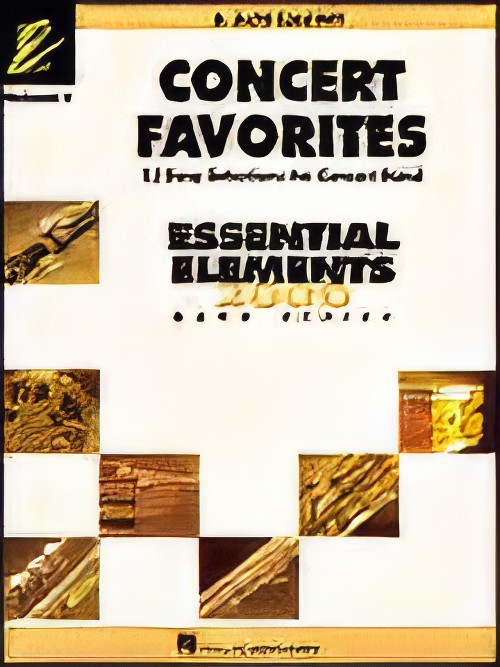 £8.50
£8.50Concert Favorites Vol.1 E flat Alto Clarinet
For beginning concert band, but playable with just: Flute or Oboe; Clarinet; Alto Sax; Tenor Sax; Trumpet; F Horn; Bass line (Bassoon/Alto Clarinet/Bass Clarinet/Baritone Sax/Trombone/Baritone BC/Baritone TC or Tuba); Percussion & Keyboard Percussion. Includes: When the Saints Go Marching In; Let's Rock; Majestic March; Power Rock, Farandole; Jus' Plain Blues; My Heart Will Go On; Rainbow Connection; Supercalifragilisticexpialidocious; Do-Re-Mi; Drums of Corona; Laredo (Concert March); Pomp and Circumstance; Stratford March.
Estimated dispatch 7-14 working days
-
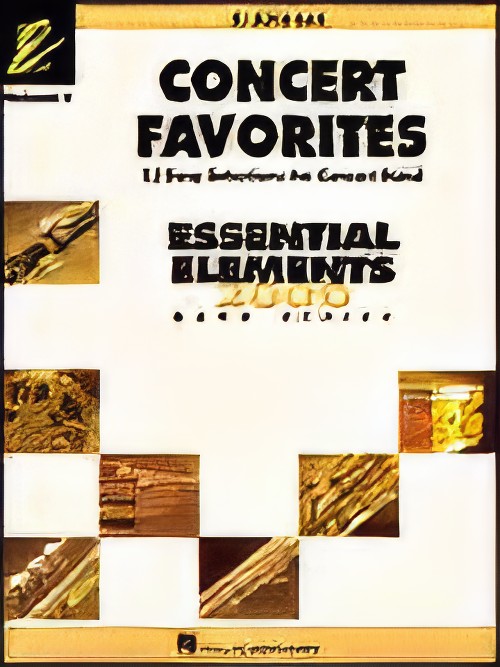 £8.50
£8.50Concert Favorites Vol.1 E flat Alto Saxophone
For beginning concert band, but playable with just: Flute or Oboe; Clarinet; Alto Sax; Tenor Sax; Trumpet; F Horn; Bass line (Bassoon/Alto Clarinet/Bass Clarinet/Baritone Sax/Trombone/Baritone BC/Baritone TC or Tuba); Percussion & Keyboard Percussion. Includes: When the Saints Go Marching In; Let's Rock; Majestic March; Power Rock, Farandole; Jus' Plain Blues; My Heart Will Go On; Rainbow Connection; Supercalifragilisticexpialidocious; Do-Re-Mi; Drums of Corona; Laredo (Concert March); Pomp and Circumstance; Stratford March.
Estimated dispatch 7-14 working days
-
 £8.50
£8.50Concert Favorites Vol.1 E flat Baritone Saxophone
For beginning concert band, but playable with just: Flute or Oboe; Clarinet; Alto Sax; Tenor Sax; Trumpet; F Horn; Bass line (Bassoon/Alto Clarinet/Bass Clarinet/Baritone Sax/Trombone/Baritone BC/Baritone TC or Tuba); Percussion & Keyboard Percussion. Includes: When the Saints Go Marching In; Let's Rock; Majestic March; Power Rock, Farandole; Jus' Plain Blues; My Heart Will Go On; Rainbow Connection; Supercalifragilisticexpialidocious; Do-Re-Mi; Drums of Corona; Laredo (Concert March); Pomp and Circumstance; Stratford March.
Estimated dispatch 7-14 working days
-
 £8.50
£8.50Concert Favorites Vol.1 F Horn
For beginning concert band, but playable with just: Flute or Oboe; Clarinet; Alto Sax; Tenor Sax; Trumpet; F Horn; Bass line (Bassoon/Alto Clarinet/Bass Clarinet/Baritone Sax/Trombone/Baritone BC/Baritone TC or Tuba); Percussion & Keyboard Percussion. Includes: When the Saints Go Marching In; Let's Rock; Majestic March; Power Rock, Farandole; Jus' Plain Blues; My Heart Will Go On; Rainbow Connection; Supercalifragilisticexpialidocious; Do-Re-Mi; Drums of Corona; Laredo (Concert March); Pomp and Circumstance; Stratford March.
Estimated dispatch 7-14 working days
-
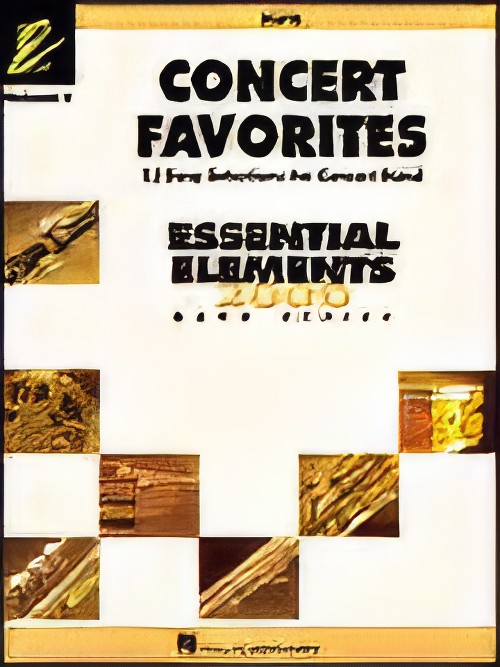 £8.50
£8.50Concert Favorites Vol.1 Flute
For beginning concert band, but playable with just: Flute or Oboe; Clarinet; Alto Sax; Tenor Sax; Trumpet; F Horn; Bass line (Bassoon/Alto Clarinet/Bass Clarinet/Baritone Sax/Trombone/Baritone BC/Baritone TC or Tuba); Percussion & Keyboard Percussion. Includes: When the Saints Go Marching In; Let's Rock; Majestic March; Power Rock, Farandole; Jus' Plain Blues; My Heart Will Go On; Rainbow Connection; Supercalifragilisticexpialidocious; Do-Re-Mi; Drums of Corona; Laredo (Concert March); Pomp and Circumstance; Stratford March.
Estimated dispatch 7-14 working days
-
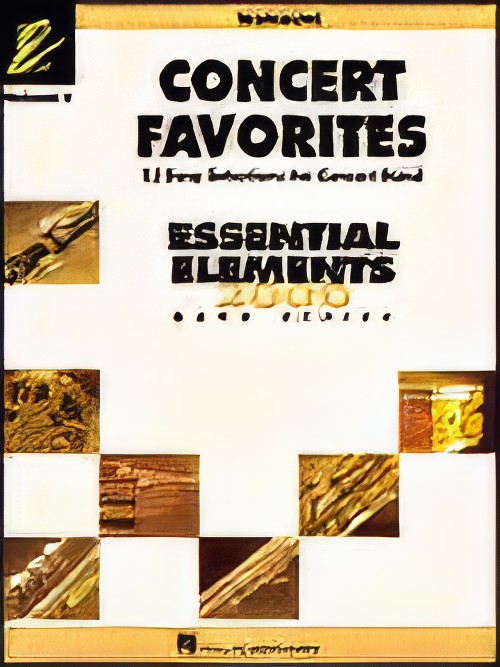 £8.50
£8.50Concert Favorites Vol.1 Trombone BC
For beginning concert band, but playable with just: Flute or Oboe; Clarinet; Alto Sax; Tenor Sax; Trumpet; F Horn; Bass line (Bassoon/Alto Clarinet/Bass Clarinet/Baritone Sax/Trombone/Baritone BC/Baritone TC or Tuba); Percussion & Keyboard Percussion. Includes: When the Saints Go Marching In; Let's Rock; Majestic March; Power Rock, Farandole; Jus' Plain Blues; My Heart Will Go On; Rainbow Connection; Supercalifragilisticexpialidocious; Do-Re-Mi; Drums of Corona; Laredo (Concert March); Pomp and Circumstance; Stratford March.
Estimated dispatch 7-14 working days
-
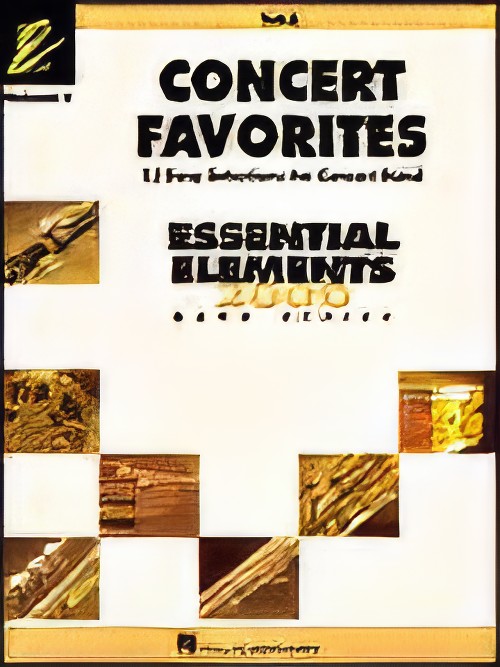 £8.50
£8.50Concert Favorites Vol.1 Tuba
For beginning concert band, but playable with just: Flute or Oboe; Clarinet; Alto Sax; Tenor Sax; Trumpet; F Horn; Bass line (Bassoon/Alto Clarinet/Bass Clarinet/Baritone Sax/Trombone/Baritone BC/Baritone TC or Tuba); Percussion & Keyboard Percussion. Includes: When the Saints Go Marching In; Let's Rock; Majestic March; Power Rock, Farandole; Jus' Plain Blues; My Heart Will Go On; Rainbow Connection; Supercalifragilisticexpialidocious; Do-Re-Mi; Drums of Corona; Laredo (Concert March); Pomp and Circumstance; Stratford March.
Estimated dispatch 7-14 working days
-
 £149.99
£149.99Concert Favorites Vol.1 Value Set - Sweeney, Michael
Score & 17 parts) For beginning concert band, but playable with just: Flute or Oboe; Clarinet; Alto Sax; Tenor Sax; Trumpet; F Horn; Bass line (Bassoon/Alto Clarinet/Bass Clarinet/Baritone Sax/Trombone/Baritone BC/Baritone TC or Tuba); Percussion & Keyboard Percussion. Includes: When the Saints Go Marching In; Let's Rock; Majestic March; Power Rock, Farandole; Jus' Plain Blues; My Heart Will Go On; Rainbow Connection; Supercalifragilisticexpialidocious; Do-Re-Mi; Drums of Corona; Laredo (Concert March); Pomp and Circumstance; Stratford March.
Estimated dispatch 7-14 working days
-
 £149.99
£149.99Concert Favorites Vol.2 (Value Set) - Sweeney, Michael
Score and 1 each of the 17 parts.For beginning concert band, but playable with just: Flute or Oboe; Clarinet; Alto Sax; Tenor Sax; Trumpet; F Horn; Bass line (Bassoon/Alto Clarinet/Bass Clarinet/Baritone Sax/Trombone/Baritone BC/Baritone TC or Tuba); Percussion and Keyboard Percussion.Includes:Amazing GraceAmerican Spirit MarchBandroom BoogieGallant MarchGathering in the GlenHigh AdventureInfinity (Concert March)Latin FireLinus and LucyMusic from The Royal FireworksRock & Roll - Part II (The Hey Song)Scarborough FairStar Trek GenerationsThe Loco-MotionTheme from Ninth SymphonyDifficulty: Beginning level to American Grade 1.5
Estimated dispatch 7-14 working days
